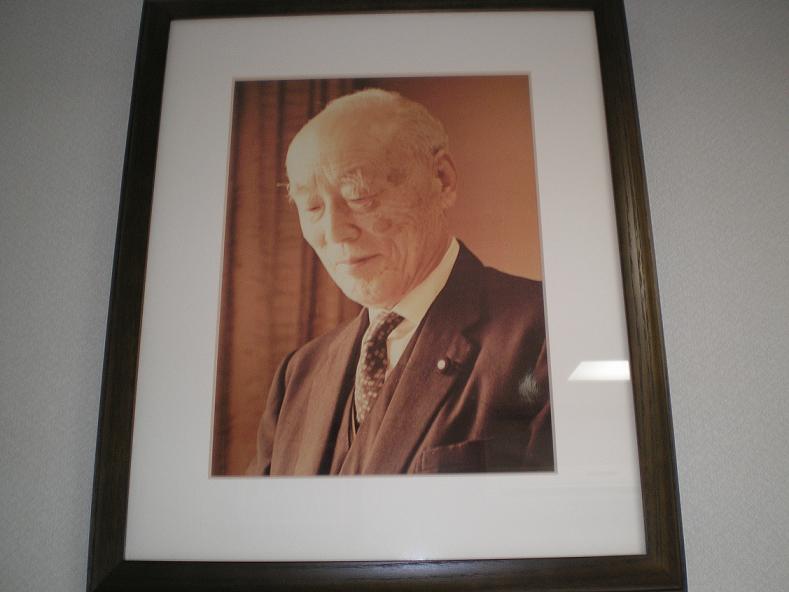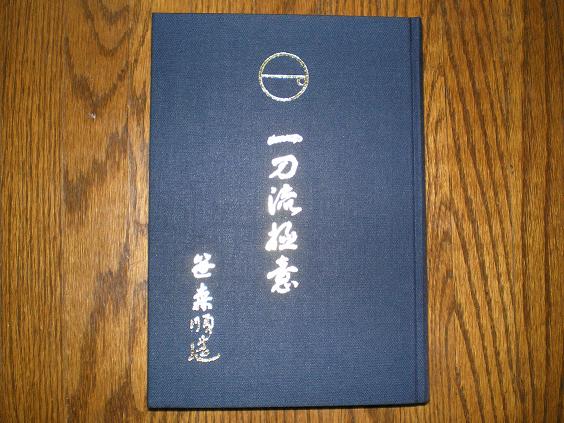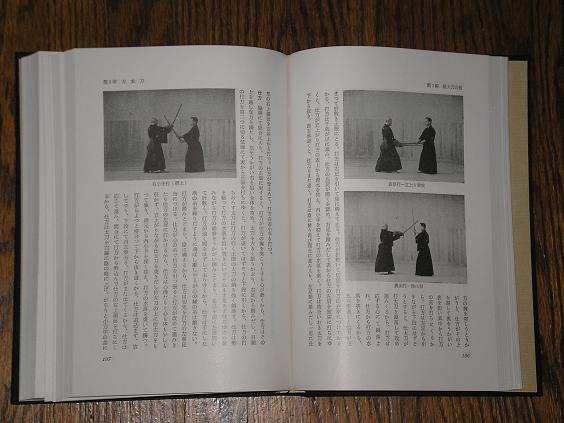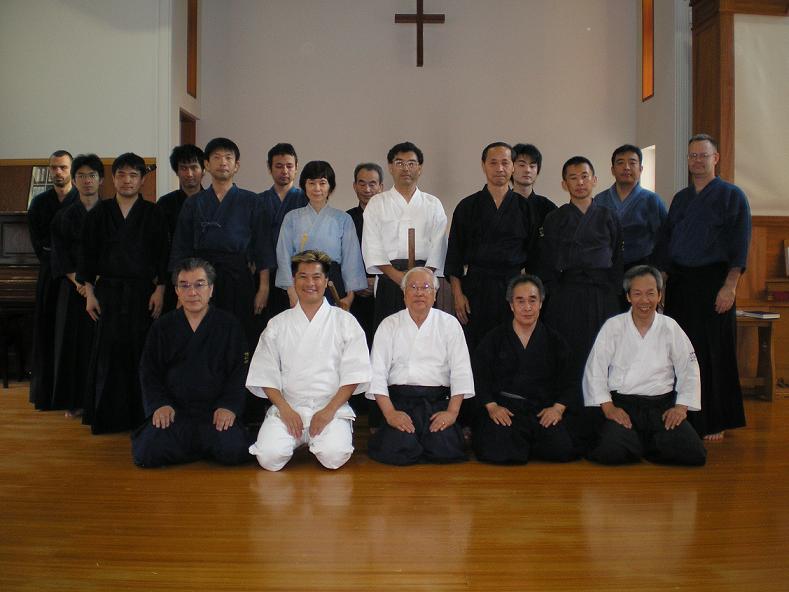The
Iaido Journal Oct 2008
One on One with Sasamori Sensei
(Ono-ha Itto Ryu)
Part Three: Teaching and Learning
copyright © 2008 Douglas Tong, all
rights reserved
The
following article is the third and final part of an interview with
Sasamori Takemi Sensei, soke of Ono-ha Itto Ryu. In this part of the
interview, Mr. Tong talks with Sasamori Sensei about what he believes
to be important in teaching and learning.
Question:
As a teacher, what do you try to teach your students, apart from just
technique?
Sensei:
Well, of course, the first thing is to teach correct technique. This
is extremely important. But I think the most important is to develop
their personality.
Question:
What do you mean by this?
Sensei: I
hope that they become a better person, a more mature person.
Question:
As a teacher, what do you believe is most important for students to
remember when studying kenjutsu (or budo)?
Sensei:
Steadiness is the most important. Slow but steady is very important.
Continuation
is also very important.*
(* in
other words, sensei likely means that students need to keep
practicing and not stop.)

Question:
Who was your teacher?
Sensei: My
father.* (Laughs)
(*
Sasamori Sensei’s teacher was his father, the famous Junzō
Sasamori. Junzō Sasamori, born in 1886, was a
Japanese politician in the Taisho and Showa Eras and served as a
cabinet minister during the Katayama government. He was also an
educator and author. He co-authored the English-language kendo primer
This
Is Kendo: The Art of Japanese Fencing with
Gordon Warner. And he exhaustively wrote down all the information
about Ono-ha Itto Ryu techniques, kata, and philosophy in one book
entitled “Itto Ryu Gokui” (“The
Secrets of Itto Ryu”); every technique, every move, every kata,
step-by-step. Unfortunately, it is available only in Japanese.


Of
course, he was also a sword master: the 16th
headmaster of Ono-ha Itto Ryu and 10th dan
kendo. He received the Order
of the Sacred Heart, for meritorious service to
the country. He passed away in 1976.)
Of course,
I learn from my students also. They are my teachers too because
teaching is learning.**
(** In
other words, when you teach, you learn from your students about what
works or doesn’t work with students.)
Learning
is teaching too.
(***
possibly, sensei means here that students, when they are learning,
are telling us how they learn and this is good information for the
teacher. Students are in essence teaching us how
to teach better.)
Question:
Do you mind a personal question?
Sensei:
No, it’s OK.
Question:
Thank you. Can you remember one interesting thing that your father
said to you or did to make you interested in studying Itto Ryu?
Sensei:
Well, my father never forced me to study or practice Itto Ryu. He was
always accepting. It made me feel very comfortable.
I do
remember that he taught gently. He was a gentle person.
And he was
always very encouraging. He gave me a lot of encouragement.
Question:
Thank you, sensei. You have been very kind. It has been a great
interview.
Sensei:
You are most welcome.

Author’s Postscript:
I have been to many dojos in Japan. At Sasamori sensei’s dojo,
the atmosphere is very friendly and open. The assistant instructors
are patient and understanding and quite jovial. They are not closed
in mind or spirit. I believe you can tell a lot about a teacher by
his students and by the atmosphere of the dojo. Sasamori sensei is
kind and, like his comments about his father, he is likewise a gentle
soul. He never raises his voice. He speaks quietly but when he
speaks, everyone is listening. He has a unique presence in the dojo.
But make no mistake, his technique is sharp and his depth of
knowledge about Itto Ryu impressive. But what impressed me the most
personally is his view, as a teacher, that the most important thing
in training in budo is to develop a better person. As a teacher
myself in my daily work, I believe this to be true as well. Budo is
about ethics and training in budo is training in ethics. I feel very
blessed to have had and continue to have the opportunity
to practice with such a great teacher. It has been spiritually
uplifting. And isn’t that truly what budo training is all
about?
Douglas Tong began his studies of Ono-ha Itto Ryu with
Sasamori
sensei in Tokyo in 1992. Mr. Tong can be reached via email at:
dmtong@rogers.com